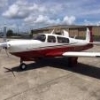Can you slip a Mooney on final?
-
Members Online
- carguy4471
- IFLYIFR
- Entropy
- cmorris
- Dick Denenny
- TheAv8r
- DXB
- johnbkeck
- Shadrach
- slowflyin
- RB21654
- Echo
- lanejacobs84
- ArtVandelay
- Larry
- Niko182
- Speed Merchant
- salty
- N201MKTurbo
- exM20K
- Chris Higgins
- 47U
- CAV Ice
- McMooney
- Sherifferic
- RoundTwo
- Fritz1
- Jcmtl
- PeterRus
- PeteMc
- jmbaute
- AndreiC
- Ibra
- DanM20C
- Stubby
- eman1200
- jlunseth
- M20S Driver


Recommended Posts
Join the conversation
You can post now and register later. If you have an account, sign in now to post with your account.